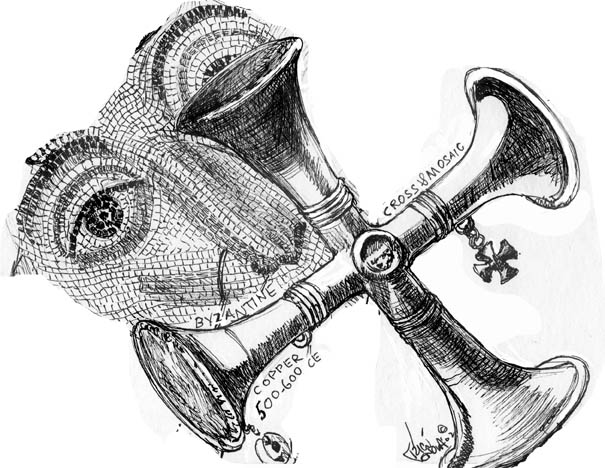A Collision of Empresses
Theodosius II, more interested in manuscript illumination than politics, let his sister lead the Empire. At 19, he told her that he didn’t care what they made him marry so long as it was beautiful. Athenais, a gorgeous Greek girl beggared by the death of her father, flung herself on the mercy of philanthropic Pulcheria, probably to avoid becoming a whore. Pulcheria took a look, heard the exquisite Greek, and married her to Theodosius II. He fell passionately in love. They re-named her Eudocia.
The beautiful Eudocia soon gained popularity over thin-lipped ascetic Pulcheria, who began to loathe her. Eudocia and the chief minister, Eunuch Chrysaphius, convinced the affable Theodosius II to give his relentless sister less credence, causing Pulcheria to move out of the palace, but her tentacles continued to creep toward her enemies. Eudocia wasn’t just a pretty face: she sponsored education, founded a university. But eventually Theodosius was persuaded away from her. She proclaimed herself a supporter of Nestorianism and left for the Holy Land, to die in sad obscurity. But oh, she had been loved, by her husband and by the people. Portraits abound. There are several in Istanbul’s Archeological Museum. She’s still beautiful.
Theotokos in Chalkoprateia
was heavily mosaiced and lavishly frescoed. It was tall and imposing, but has vanished utterly.
Here’s the north aisle, heading toward Hagia Sophia. While this Hagia Sophia was being built, from 532 to 537, our church was the Seat of the Patriarchate of the Eastern Roman Empire.
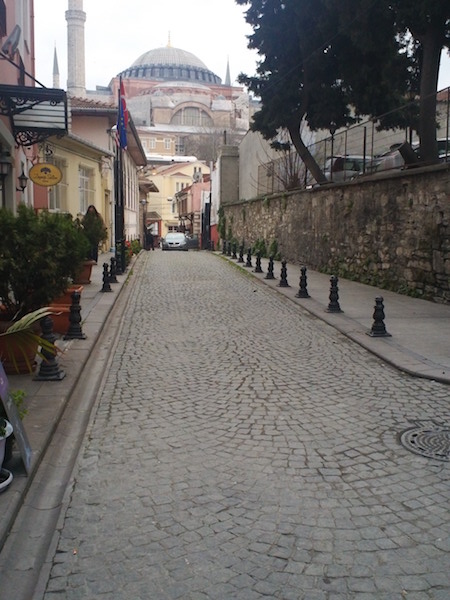
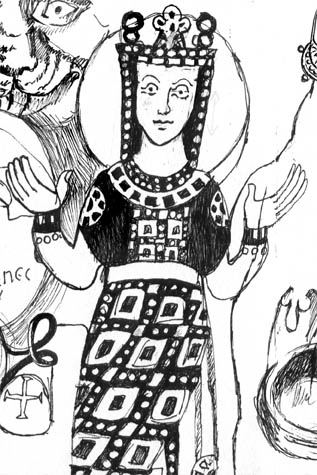
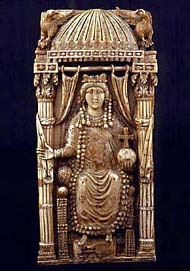
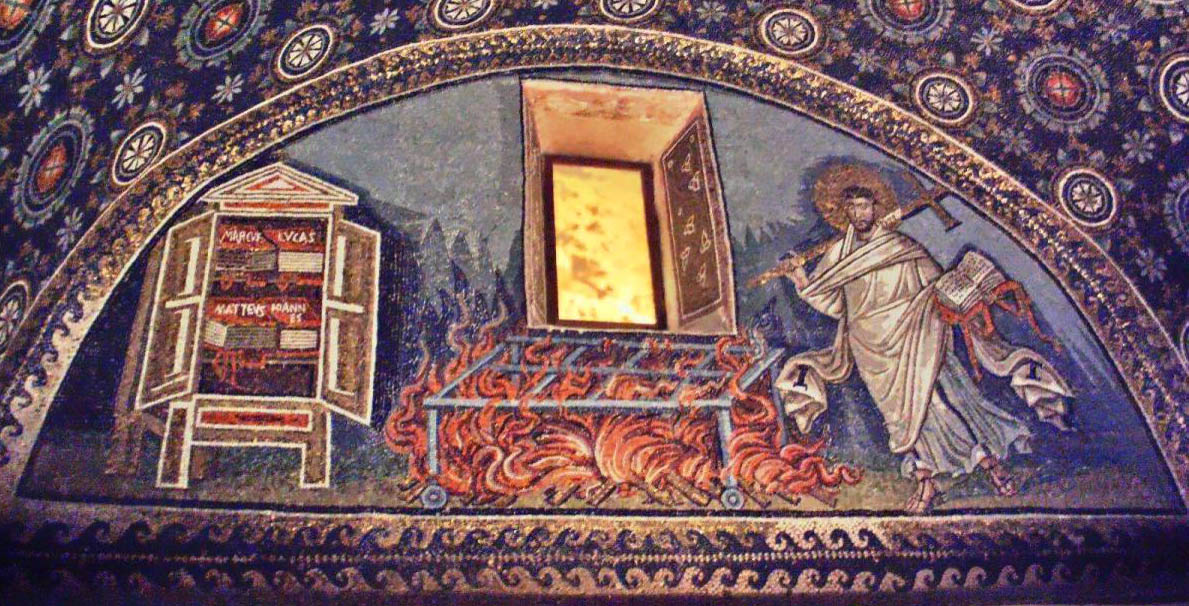
The famous mosaics, covering the Life of the Virgin, were destroyed in the 8th century by Iconoclasts, but the Relics of the Virgin remained in its walls.
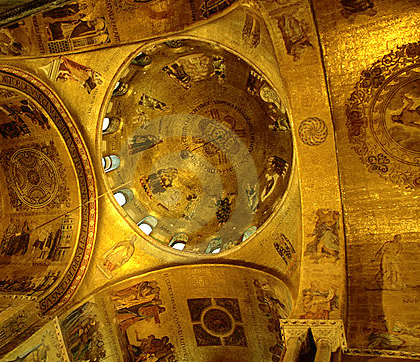
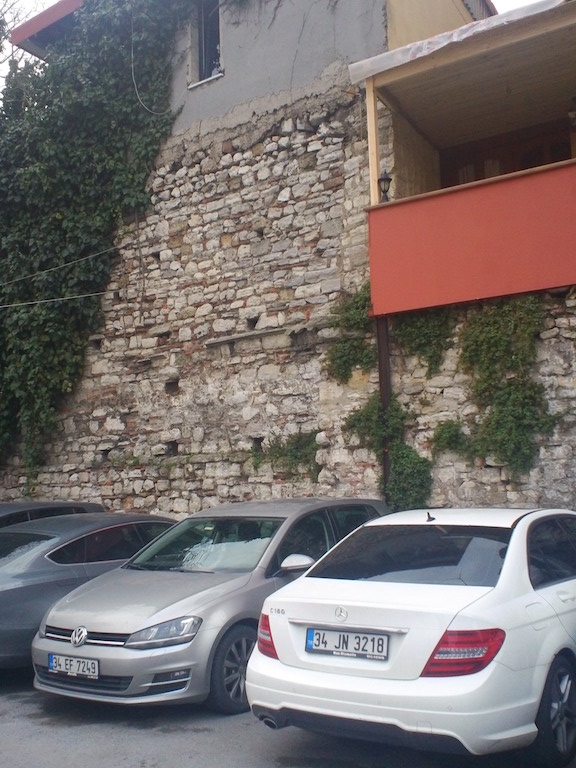
The gilded coffered ceiling and the doors of silver, electrum and gold were sold off by Emperor Alexios Komnenos in the 11th century to finance a defense against a Norman threat. Before Alexios, Theotokos’ interior likely resembled this:
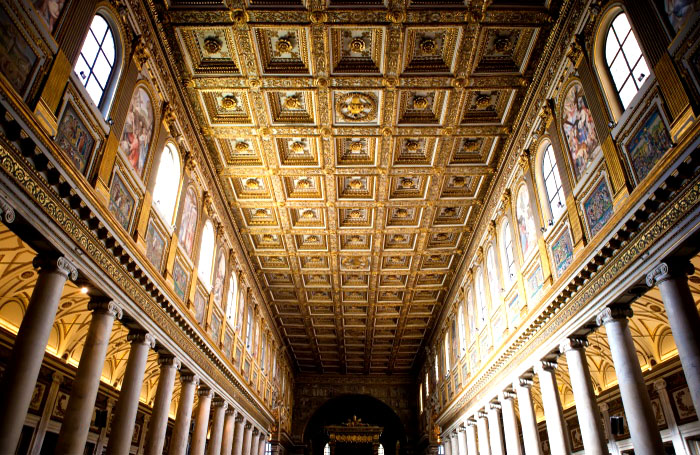
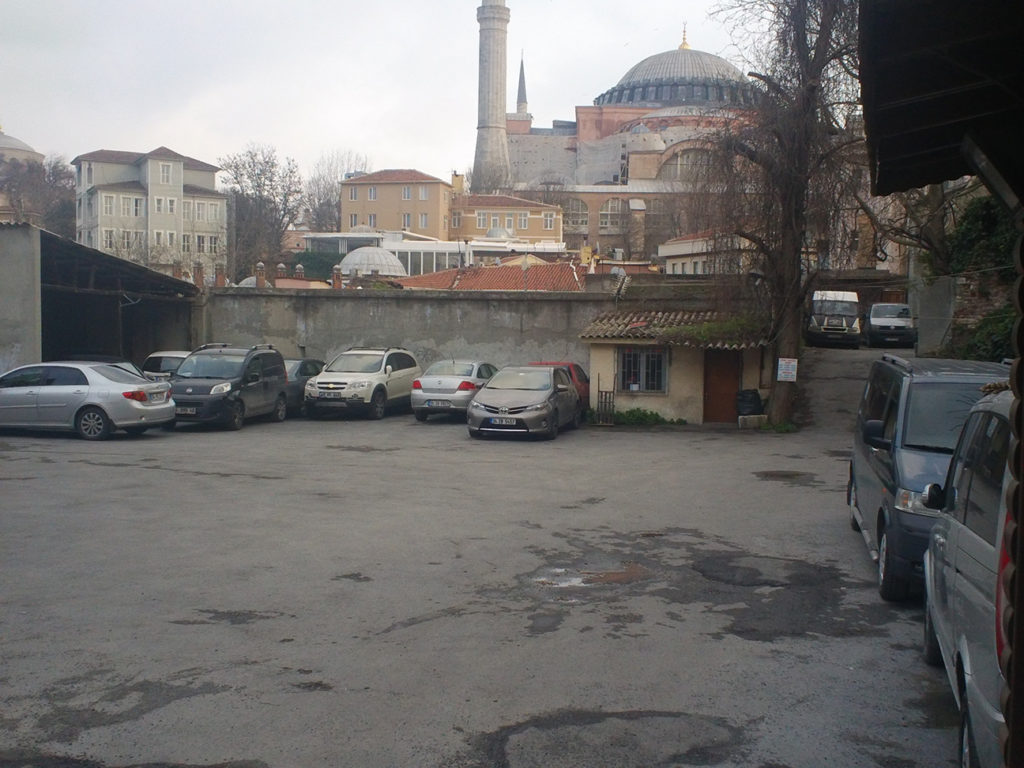
Under Latin rule from 1204 to 1261, our church became a cathedral occupied by priests: Sancta Maria de Cinctur, or St Mary of the Shingles. Workshops probably made shingles in the area by then, or perhaps the priests had them. Considering what the Latin Crusaders did to Constantinople, we can only hope. Here’s the surviving 4th or 5th century Byzantine wall.
It’s still standing because in 1484, 31 years after the Ottoman Conquest, the ruined church, nee synagogue, was converted to a mosque by order of one Lala Hayruddin. In 1755, by order of Vizier Mehmet Said Pasha, the mosque was restored and re-consecrated as Acem Aga Mescidi. Down the street, in 1769, Zeynep Sultan Mosque was built and consecrated. In 1814 this fountain in the street was built. See that Byzantine wall next to it? And the tribal carpet for sale next to that? These juxtapositions are why I live here. And, of course, tripping over the occasional Ghost Church.
By 1936, Turkey’s zeitgeist was not religious, and the mosque was abandoned, slowly falling into weedy disrepair. It’s been derelict since 1936, subsumed by the city. If you go up to the terrace at Alemdar Restaurant to watch the Dervishes whirl in front of Hagia Sophia, you can see this from the stairs: the last relic of the altar of Theotokos in Chalkoprateia.
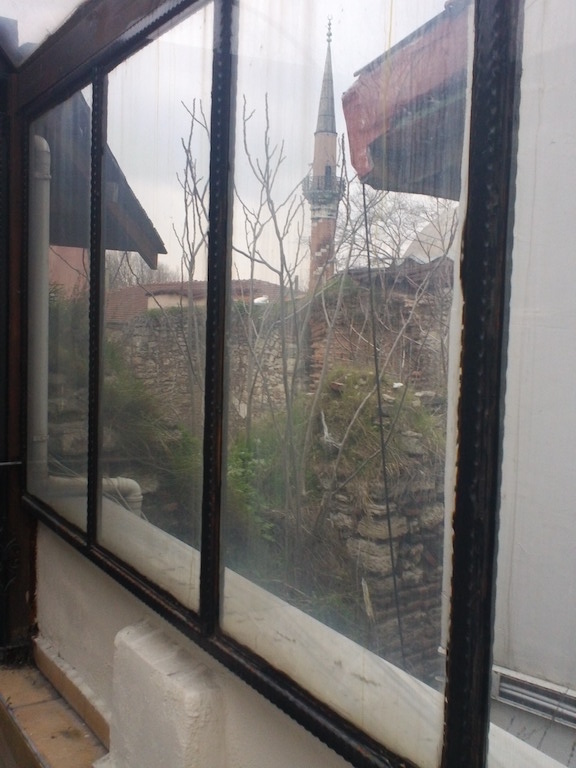
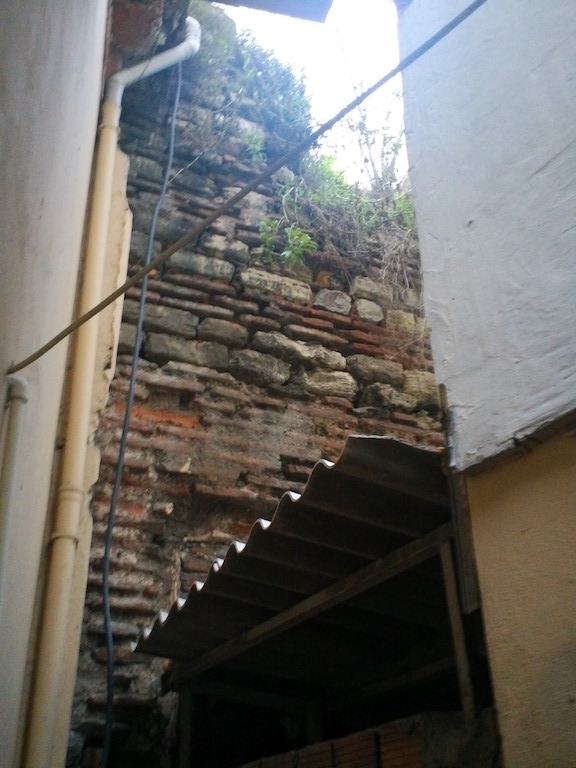
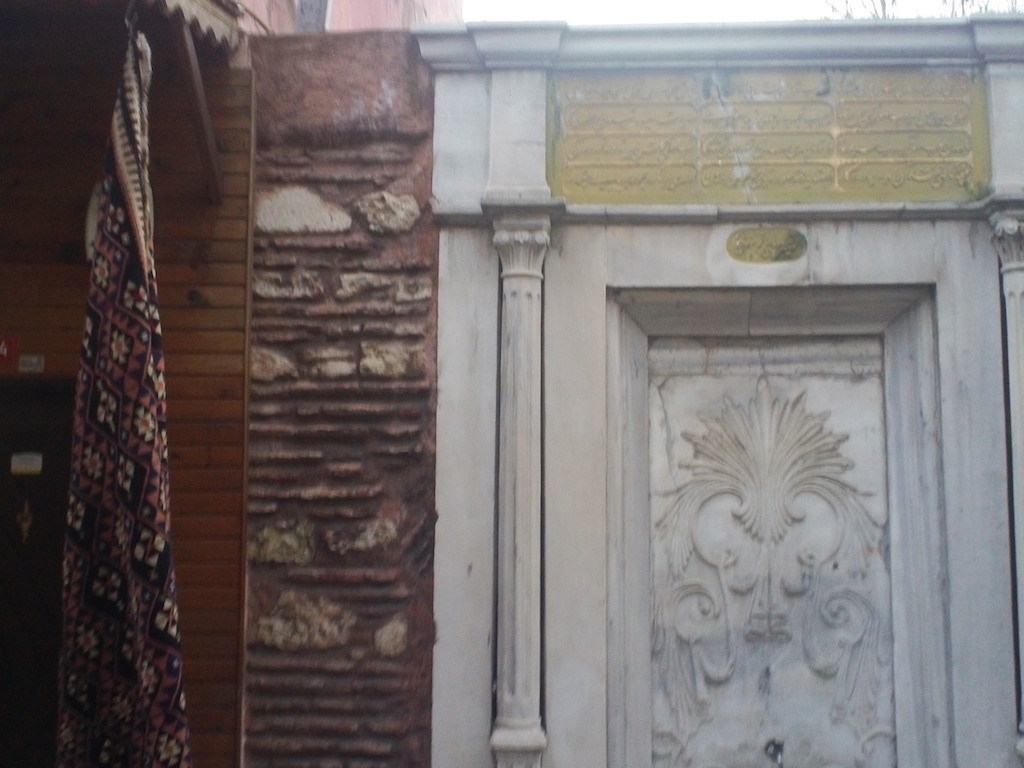
The street running from one pillar stub to the double arches has always been spooky at night, in a high, cool, grey, waiting kind of way.
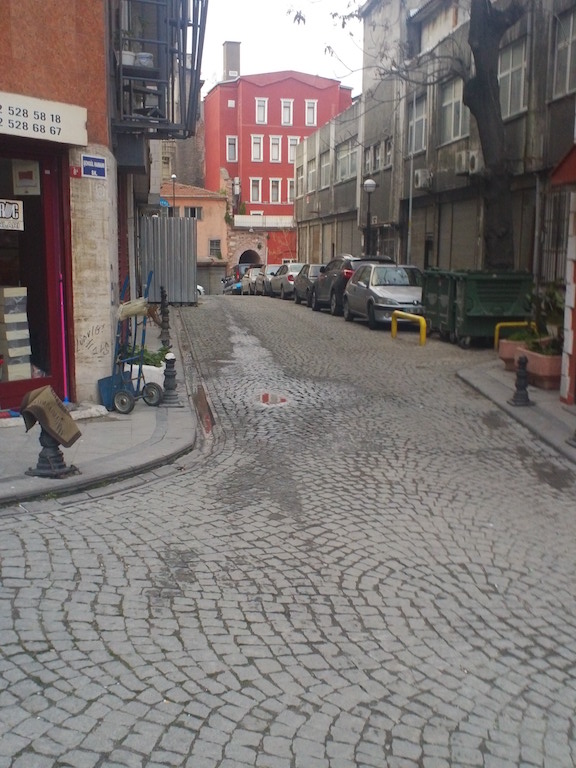
It’s probably just imagination
